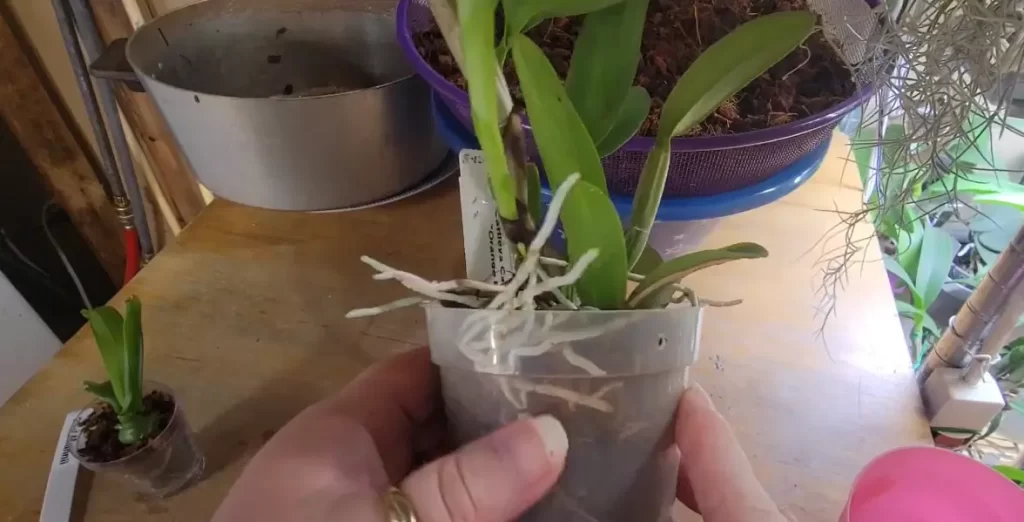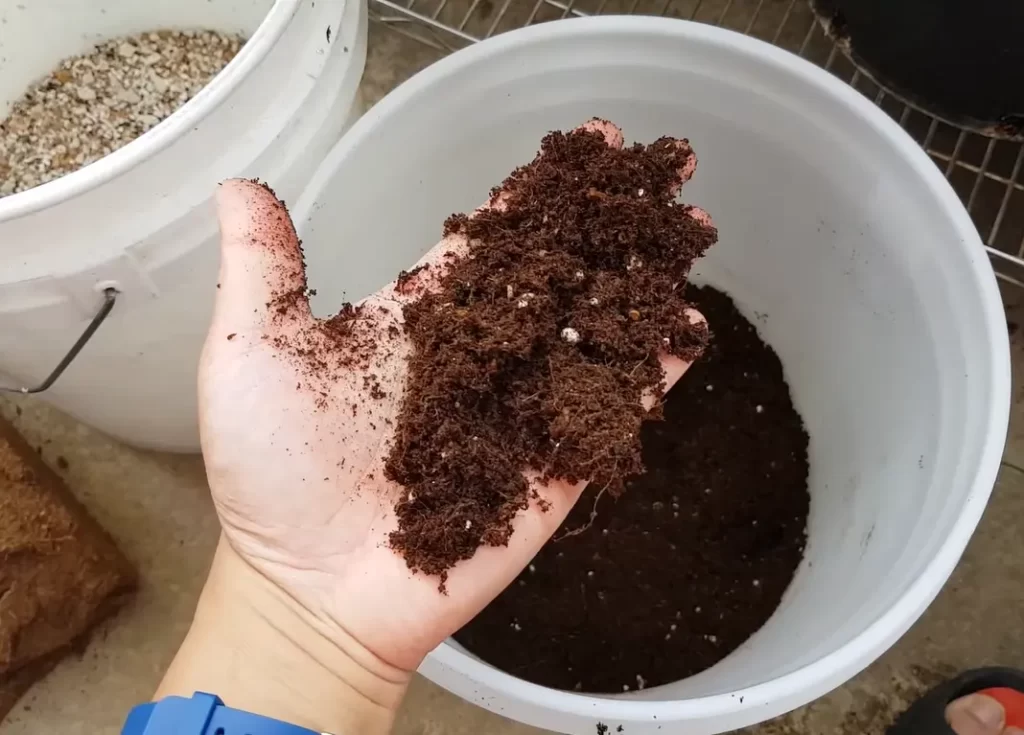Can Succulents Grow In Coconut Fiber?
Succulents are popular among plant enthusiasts due to their hardy nature and unique appearance. However, finding the right soil mix for them can be a challenge.
One alternative to traditional soil is coconut fiber, an eco-friendly, sustainable, and affordable option.
Coconut fiber is known for its water retention capacity, perfect for succulents that require well-draining soil. But the question is, can succulents grow in coconut fiber?
Yes, succulents can grow in coconut fiber. Coconut fiber is a great medium for succulents, as it is lightweight, provides good drainage, and retains moisture well.
In this blog, we will delve into the benefits and drawbacks of using coconut fiber as a growing medium for succulents.
What Coconut Fiber Is and How It Work For Plant Growing
Coconut fiber, also known as coir, is a natural fiber obtained from the husks of coconuts. It is a popular choice for potting mixes and soil amendments due to its excellent water retention and drainage properties.

When mixed with other materials, such as sand or bark, coconut fiber can create a well-draining soil ideal for plant growth. Basically, coconut fiber provides a light, airy structure that allows plenty of aeration and moisture retention, which is particularly beneficial for cacti and succulent plants that require well-draining soil.
It also provides a good source of nitrogen for plants and helps prevent root rot by promoting good drainage. Coconut fiber is also an environmentally friendly alternative to peat moss, often harvested from delicate ecosystems.
Can Succulents Grow In Coconut Fiber?
Yes, succulents can grow in coconut fiber or coconut coir as a potting mix. Coconut coir is a popular choice among succulent growers because it provides excellent drainage, crucial for preventing root rot in succulent plants.
Coconut coir is also a sustainable alternative to peat moss, which is not environmentally friendly. Coconut fiber is an organic material made from the husks of coconuts. It is commonly mixed with other materials, such as sand, bark, or pumice, for aeration and better water retention.
However, you’ll need to ensure that the coconut coir mixture has sufficient nutrients, particularly nitrogen, which succulent plants require. Overall, coconut coir can be a suitable soil option for succulent plants, provided it has the necessary drainage and nutrient conditions.
Benefits of Using Coconut Fiber for Succulents Grow
Choosing the right soil is crucial for the health and growth of succulents, and coconut fiber has emerged as a popular choice for planting succulents. Here are some benefits of using coconut fiber for succulent growth:
Excellent soil for succulents
Succulents require well-draining soil that allows excess water to escape easily, preventing root rot. Coconut fiber, also known as coconut coir, has excellent drainage properties, making it an ideal soil for succulents. It also perfectly balances aeration and moisture retention, promoting healthy root growth.
Rich in Nutrients
Coconut fiber is an organic material that contains essential nutrients like nitrogen and potassium, making it a great choice for succulent soil. These nutrients help to promote the healthy growth and development of succulent plants, ensuring they thrive.
Retains Moisture
One of the benefits of coconut fiber is its ability to retain moisture. It absorbs water easily and releases it slowly, providing consistent moisture to succulent roots. This is especially useful in dry climates, where succulents can quickly dehydrate.
Eco-Friendly Material
Coconut fiber is an eco-friendly material obtained from the husks of coconuts, making it a renewable resource. It is a sustainable alternative to peat moss, often harvested from non-renewable sources.
Easy to Use
Coconut fiber is easy to use and can be mixed with other materials like sand, bark, or perlite to create the perfect potting mix for succulent plants. It also has a neutral pH level, which means it won’t affect the acidity or alkalinity of the soil.
Improves Drainage
Adding coconut fiber to potting mixes improves drainage, preventing soil from becoming waterlogged. This reduces the risk of root rot and other diseases affecting succulent plants.
Drawbacks of Using Coconut Fiber as a Growing Medium for Succulents
Coconut fiber, also known as coco coir, is a popular growing medium for succulent plants due to its ability to retain moisture while allowing for good drainage. However, there are some drawbacks to using coconut fiber as a growing medium for succulents.
- Poor Soil Structure: Coconut fiber has a loose structure that can cause the soil to compact over time, leading to poor aeration and drainage. This can cause the roots of succulent plants to become waterlogged, leading to root rot and other issues.
- Lack of Nutrients: Coconut fiber is a sterile medium with little to no nutrients for succulent plants. This means that growers will need to supplement the soil with fertilizer or other nutrients to ensure the plants are receiving the necessary nourishment to grow and thrive.
- Excess Moisture Retention: While coconut fiber is a good moisture retainer, it can retain too much moisture for succulent plants that prefer dry conditions. Excess moisture retention can lead to root rot, which can be fatal to succulent plants.
How to Use Coconut Fiber to Grow Succulents
Succulents require well-draining soil to thrive, making coconut fiber an excellent choice for their growth. Here are some steps to using coconut fiber to grow succulents.
1. Prepare the Coconut Fiber
Coconut fiber comes in compressed blocks or bricks and needs to be soaked in water before use. Place the coir block in a large bucket or container and add warm water. Allow it to soak for at least an hour or until it has fully expanded. Drain off any excess water and fluff the fiber with your hands.
2. Mix with Other Materials
While coconut fiber alone can be used to grow succulents, it is best to mix it with other materials for optimal growth. You can add perlite, vermiculite, or sand to the coconut fiber in equal parts to create a well-draining soil mix. The additional materials will improve the soil structure and prevent compaction, which can lead to root rot.
3. Fill the Pot with the Soil Mix
Fill the pot with the soil mix up to about an inch below the rim. Ensure to leave enough space for watering.
4. Plant the Succulent
Remove the succulent from its current pot and gently loosen the roots. Place it in the center of the pot and fill in the soil mix around it. Lightly press down the soil to secure the plant in place.
5. Water the Succulent
Water the succulent thoroughly until water runs out of the drainage holes. Allow the soil to dry out completely before watering again. Overwatering can lead to root rot, so letting the soil dry out between watering sessions is crucial.
6. Maintain the Succulent
Succulents thrive in bright, indirect sunlight, so place them in a well-lit area. They also prefer warmer temperatures and do well in temperatures between 60-80 °F. Fertilize the succulent with a balanced fertilizer once a month during the growing season. Even you can use succulent fertilizer for other plants as well.
How Much Coconut Fiber You Need To Grow Succulents Plants
Coconut fiber is a popular growing medium for succulent plants because it is organic, porous and helps retain moisture. The amount of coconut fiber needed to grow succulent plants depends on several factors, including the size of the container, the number of plants, and the desired drainage level.

As a general rule of thumb, a 50:50 mix of coconut fiber and perlite is a good starting point for growing succulents in containers. However, the specific amount of coconut fiber needed will vary based on the plants’ individual needs. It’s recommended to start with a smaller amount and adjust as needed based on how the plants respond to the growing medium.
Final Thoughts
“Can succulents grow in coconut fiber?” is a highly debated topic, but the answer is yes. Typically, coconut fiber is a great option for succulents since it provides the necessary drainage, air circulation, and moisture needed for a succulent to grow. Furthermore, coconut fiber is easily available, affordable, and easy to use. It can be used to line the bottom of the pot, as the main soil mix, or as a top dressing.
